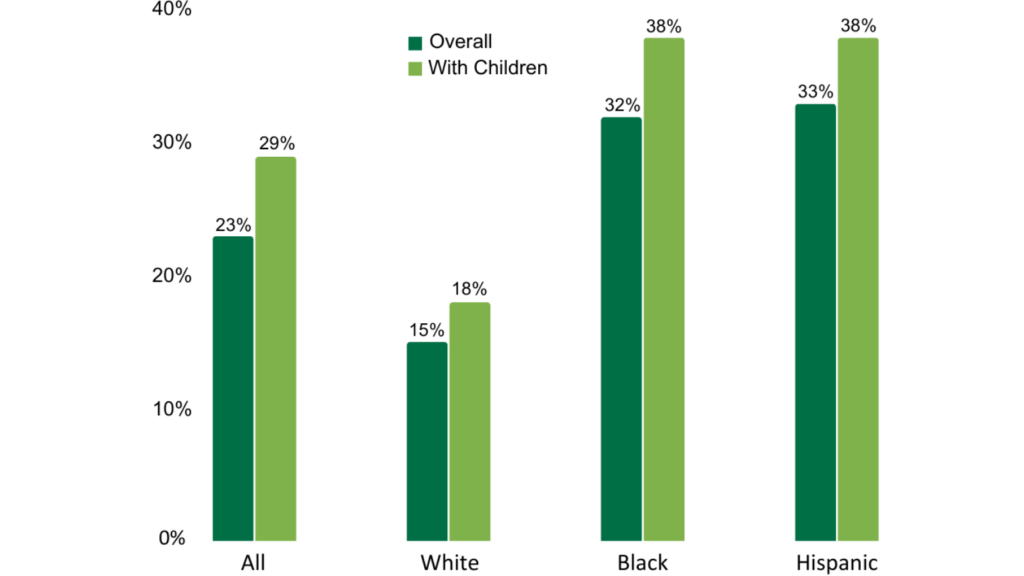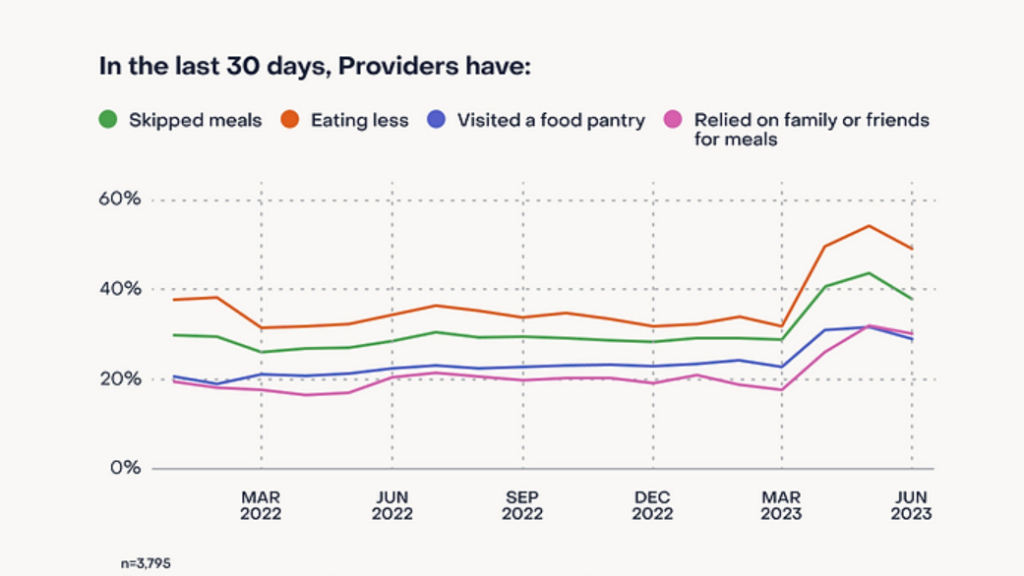Introducing Research & Strategic Initiatives
July 5, 2023
We do not offer food. Here’s where you can find food.
No distribuimos alimentos. Encuentre comida gratis aquí.
我們不直接提供食物,但我們能幫助您找尋食物。
CAFB’s new department of Research and Strategic Initiatives uses data to understand the state of hunger in California and how to effectively address it. One source we rely on is the US Census Bureau’s Household Pulse Survey, which provides data on food hardship in near-real time. Researchers at Northwestern’s Institute for Policy Research used the most recent data – from June 2023 – to estimate that 23% of California households are food insecure (have inadequate or uncertain access to food). Rates are even higher for households with children and Black and Hispanic households (see graph below) due to structural racism and other social inequities. Today’s levels of food insecurity are comparable to those at the onset of the Covid-19 pandemic, before federal and state initiatives provided some relief.
Food Security in CA Households: June 7 – June 19, 2023

This year is an important one for food insecurity research, especially with the ending of CalFresh Emergency Allotments (EAs) – which had been boosting food benefits by at least $95 per month throughout the pandemic. EAs formed an important part of the food assistance safety net in 2021, along with regular CalFresh issuances, Pandemic-EBT, food charities, and other programs. It’s estimated that EAs alone augmented CalFresh food benefits by 69% and kept 350,000 Californians out of poverty. CalFresh recipients got their final EA issuance in March of this year.
The ending of EAs coincides with a period of inflated food costs and the phasing out of other pandemic-era supports. Data across multiple sources indicate that these events have escalated a hunger crisis. For example, a survey of SNAP users collected by Propel shows that rates of skipping meals, eating less, and visiting a food pantry shot up in the two months after EAs ended. And many California food banks have reported serving more people, distributing more food, and expending more resources to meet their communities’ needs in April, compared to previous months. We are working with food banks to assess and quantify these changes in demand for charitable food over time.

We are also conducting qualitative and quantitative research this summer to help better understand and document the experiences of CalFresh recipients, outreach workers, and others on how their lives and communities have been impacted in the wake of EAs ending. We will use multiple methods, including food bank surveys, focus groups, stakeholder interviews, and administrative data analyses. Graduate students from UC Berkeley and UCLA have joined CAFB for the summer to help with data collection in English, Spanish, and Chinese. A summary report of findings will be completed in September 2023.